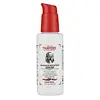What's inside
What's inside
 Key Ingredients
Key Ingredients

 Benefits
Benefits

 Concerns
Concerns

 Ingredients Side-by-side
Ingredients Side-by-side

Camellia Sinensis Leaf Water
MaskingButylene Glycol
HumectantDimethyl Sulfone
SolventBetaine
Humectant1,2-Hexanediol
Skin ConditioningBetaine Salicylate
AntimicrobialGluconolactone
Skin ConditioningPolyglyceryl-10 Laurate
Skin ConditioningPolyglyceryl-10 Myristate
Skin ConditioningGlycerin
HumectantPanthenol
Skin ConditioningAllantoin
Skin ConditioningArginine
MaskingSodium Hyaluronate
HumectantMelaleuca Alternifolia Leaf Oil
AntioxidantAsiaticoside
AntioxidantAsiatic Acid
Skin ConditioningMadecassic Acid
Skin ConditioningCamellia Sinensis Leaf Water, Butylene Glycol, Dimethyl Sulfone, Betaine, 1,2-Hexanediol, Betaine Salicylate, Gluconolactone, Polyglyceryl-10 Laurate, Polyglyceryl-10 Myristate, Glycerin, Panthenol, Allantoin, Arginine, Sodium Hyaluronate, Melaleuca Alternifolia Leaf Oil, Asiaticoside, Asiatic Acid, Madecassic Acid
Water
Skin ConditioningPropylene Glycol
HumectantHamamelis Virginiana Extract
AntiseborrhoeicHamamelis Virginiana Water
AstringentAloe Barbadensis Extract
Skin ConditioningGlycerin
HumectantRosa Damascena Flower Water
MaskingSodium PCA
HumectantRosa Canina Fruit Oil
EmollientAscorbic Acid
AntioxidantSodium Hyaluronate
HumectantCitrus Limon Peel Extract
EmollientCucumis Sativus Fruit Extract
EmollientCaprylyl Glycol
EmollientPhenoxyethanol
PreservativeEthylhexylglycerin
Skin ConditioningXanthan Gum
EmulsifyingWater, Propylene Glycol, Hamamelis Virginiana Extract, Hamamelis Virginiana Water, Aloe Barbadensis Extract, Glycerin, Rosa Damascena Flower Water, Sodium PCA, Rosa Canina Fruit Oil, Ascorbic Acid, Sodium Hyaluronate, Citrus Limon Peel Extract, Cucumis Sativus Fruit Extract, Caprylyl Glycol, Phenoxyethanol, Ethylhexylglycerin, Xanthan Gum
Ingredients Explained
These ingredients are found in both products.
Ingredients higher up in an ingredient list are typically present in a larger amount.
Glycerin is already naturally found in your skin. It helps moisturize and protect your skin.
A study from 2016 found glycerin to be more effective as a humectant than AHAs and hyaluronic acid.
As a humectant, it helps the skin stay hydrated by pulling moisture to your skin. The low molecular weight of glycerin allows it to pull moisture into the deeper layers of your skin.
Hydrated skin improves your skin barrier; Your skin barrier helps protect against irritants and bacteria.
Glycerin has also been found to have antimicrobial and antiviral properties. Due to these properties, glycerin is often used in wound and burn treatments.
In cosmetics, glycerin is usually derived from plants such as soybean or palm. However, it can also be sourced from animals, such as tallow or animal fat.
This ingredient is organic, colorless, odorless, and non-toxic.
Glycerin is the name for this ingredient in American English. British English uses Glycerol/Glycerine.
Learn more about GlycerinSodium Hyaluronate is hyaluronic acid's salt form. It is commonly derived from the sodium salt of hyaluronic acid.
Like hyaluronic acid, it is great at holding water and acts as a humectant. This makes it a great skin hydrating ingredient.
Sodium Hyaluronate is naturally occurring in our bodies and is mostly found in eye fluid and joints.
These are some other common types of Hyaluronic Acid:
Learn more about Sodium Hyaluronate